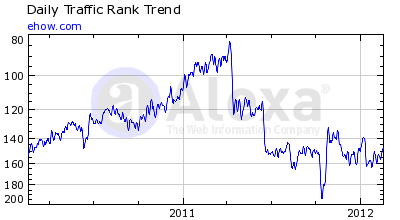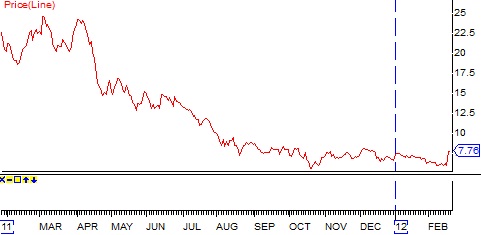 The Panda algorithm update has affected A LOT of websites and companies which built (and relied) almost whole of their business model on traffic from Google. One of the biggest ones impacted, is the public company Demand Media that holds eHow.com, which still hunted by the notorious algorithm.
The Panda algorithm update has affected A LOT of websites and companies which built (and relied) almost whole of their business model on traffic from Google. One of the biggest ones impacted, is the public company Demand Media that holds eHow.com, which still hunted by the notorious algorithm.
eHow was created in 1999 as user-generated content site that focused on how-to guides. The website has grown quickly and its traffic rose accordingly as search engines (mostly Google) sent it more and more visitors. With the site’s increased traffic came along more investors and then buyers, and after switching several hands eHow was finally acquired by Demand Media in 2006.
After the acquisition, eHow growth only accelerated year after year and in the end of 2010 the site already hosted more than two million how-to articles and attracted about 60 million monthly visitors. In 2010, With a nearly $2 billion valuation of eHow, Demand Media decided to go public and filed for an IPO.
On the IPO documents, the company revealed two interesting issues that I want to discuss about before I go on. Both of the issues are related to same topic- Demand Media dependency on search engines and more specifically on Google which is by far the most dominant search engine in the U.S. and worldwide.
Demand Media disclosed that the company is receiving a major chunk of its traffic from search engines where Google is leading the way:
“We depend in part on various Internet search engines, such as Google, Bing, Yahoo!, and other search engines to direct a significant amount of traffic to our owned and operated websites. For the quarter ended June 30, 2010, approximately 40% of the page view traffic directed to our owned and operated websites came directly from these Internet search engines (and a majority of the traffic from search engines came from Google).”
40% from the total amount of traffic is huge! This sort of reliability on one type of traffic source is tremendously dangerous, especially when there were already signs for the future to come: At that time, other smaller alternative search engines like DuckDuckGo and Blekko already flagged eHow as low-quality content site while filtering it from their results.
Demand Media had to disclose also in its IPO documents another clear warning about this subject directly, for potential investors:
“Search engines frequently revise their algorithms in an attempt to optimize their search result listings. Changes in the methodologies used by search engines to display results could cause our owned and operated websites or our customer websites to receive less favorable placements.”
In February 2011, just a few weeks after Demand Media went public Google launched its first Panda update to target content farms. Apparently, the first update only contribute to eHow traffic as the site remained unaffected while its rivals suffered from a drastic rankings demotion, which granted the site better positions. However when the second update was launched in April, the site’s avoiding-Panda luck has ended.
eHow suffered from a huge drop in Google rankings and thus significant referral traffic decline in April and later on sinking few more times with additional Panda updates. Online reports have indicated that eHow lost 40%-70% out of its total traffic due to the Panda tweaks! However, it seems that since October last year and until now, eHow is slowly recovering. Here’s the site’s traffic movements since 2010 until early 2012, according to Alexa:

Two weeks ago I discussed that Panda recovery is possible but very difficult, something that Demand Media is apparently beginning to sense over the last few months- This week, the company provided some confirmation to eHow’s partial recuperation at the company’s fourth quarter 2011 earning report:
“eHow.com ranked as the #19 website in the US, with 48.2 million unique users in the US in January 2012.”
By the way, Demand Media’s early IPO investors, still have a long way until the company’s market cap will return to what it used to be for its firsts few months- In its peak it was worth about $27 for a share, where today it only worth nearly $8 for a share…
